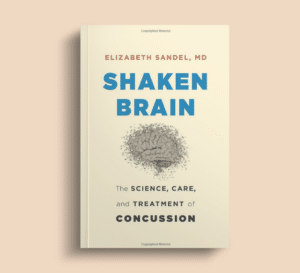Opioids Cause Problems After a Brain Injury

What opioids are and how they’re used
Opioids are a class of drugs found naturally in the poppy plant that act on specific receptors in the brain, the spinal cord, and other sites throughout the body. When opioids interact with these receptors, they produce analgesia (reduction of pain perception.) However, they can also produce euphoria (intense pleasure or a sense of well-being) in addition to pain relief, and the euphoria is what people are after when they abuse them.
Opioids include the illegal drug heroin, synthetic opioids such as fentanyl, and prescription pain relievers available legally such as oxycodone (OxyContin®, Percocet®), hydrocodone (Vicodin®), codeine, morphine, and others.
Because they’re so good at reducing pain after an injury or surgery, opioids are used for acute pain. Chronic pain, which is pain that lasts more than three months, is a different story. People who have been in an accident or event that has led to a concussion or brain injury often have chronic pain, including headaches, neck or backaches, and sometimes nerve pain. Opioids are commonly prescribed to TBI patients in the hospital, but other treatments are always preferable for pain management over the long term. A recent study found that opioid use and misuse were very high in patients with TBI.
The problem with opioid drugs
“Fire is a good servant but a bad master,” the old saying goes. The same can be said for opioids, a class of drugs that are great at alleviating pain but, unfortunately, can take over people’s lives when they become dependent or addicted. The result can be severe disability or death from an overdose.
One of the problems with opioids is that they are medications that have been approved by the Federal Drug Administration (FDA), and therefore people think they’re safe. They know that if they take methamphetamine, cocaine, or heroin, they’re breaking the law and taking a chance. But when they take a drug their doctor prescribed, they don’t feel the same sense of danger.
More than 2 million Americans abuse prescription opioids like Oxycontin (oxycodone), Vicodin (hydrocodone and acetaminophen), and Percocet (oxycodone and acetaminophen). As the number of prescriptions has increased over the years, so has the number of people addicted to and dying from opioids.
The CDC reports an estimated 100,306 drug overdose deaths in the United States during the 12 months ending in April 2021, an increase of 28.5% from the 78,056 deaths during the same period the year before. Overdose deaths from synthetic opioids (primarily fentanyl), methamphetamine, cocaine, and natural and semi-synthetic opioids (such as prescription pain medication) also increased.
How to avoid becoming addicted
The good news is that only a small percentage of people who are prescribed opioids will develop a substance use disorder. Substance use disorders occur when the recurrent use of alcohol and drugs causes health problems, disability, and failure to meet primary responsibilities at work, school, or home. Addiction means the compulsive use of a substance, like a drug or alcohol, despite harmful consequences.
Although only a small number of people given an opioid prescription will develop a substance use disorder, there is an epidemic of opioid use in the U.S. that is challenging our health systems and individual providers. Physical dependence can develop when the body adapts to the substance, and tolerance refers to the body’s need for more of the substance to get the same effect. If people are dependent on a substance, withdrawal symptoms can occur when they stop using the substance. Dependence and tolerance can accompany addiction, but these conditions are different. A person may become dependent on a drug but not have a substance abuse problem.
If you’re concerned about your use of prescription painkillers, take these steps to reduce your chances of developing a substance use problem:
- Take the medication only as prescribed by your doctor. Don’t take larger or more frequent doses. At the same time, don’t avoid taking them as prescribed because you fear you’ll become addicted. If you let the pain get too intense, you might end up taking too much later.
- Don’t “shop” doctors – that is, don’t go to different doctors to get multiple prescriptions. Though you may see many healthcare professionals to evaluate and treat your pain, you should not be getting multiple prescriptions for the same drug.
- Try natural or alternative methods to reduce pain, such as exercise, good sleep patterns, hot or cold therapy, massage therapy, chiropractic care, acupuncture, biofeedback, and meditation or guided imagery.
- Manage your stress and seek help from mental health professionals if you have depression or anxiety. These conditions can make your experience of pain worse.
Learn more about chronic pain, opioid use, and TBI
Physiatrist Dr. Steven Moskowitz and I covered pain management after a concussion or mild brain injury in an interview, which I encourage you to watch in its entirety. You can watch it here.
Here are additional resources on opioids, chronic pain, and TBI:
You Might Also Like
Managing Concussion-Related Pain
Dr. Steven Moskowitz is a physiatrist specializing in pain management. He discusses the various painful conditions, including neck pain and headaches, that occur at high frequency after concussion and related trauma. He advocates for a biopsychosocial approach to the evaluation and treatment of these conditions.
Mood Disorders Such as Depression Can Complicate a Brain Injury
A traumatic brain injury can be associated with depression or another mood disorder, possibly because of the disruption of brain chemicals.
3 Things to Do to Allow Your Brain to Recover More Quickly After Brain Injury
After a concussion, people need good sleep patterns, and they also need to resume activity and exercise to aid recovery. Activities with concussion risk should be avoided, however.
Keep up to date
Get updates on the latest in concussion, brain health, and science-related tools from Dr. Elizabeth Sandel, M.D.
By clicking SIGN UP, you agree to receive emails from Dr. Sandel and agree to our terms of use and privacy policy.
Get the book!




